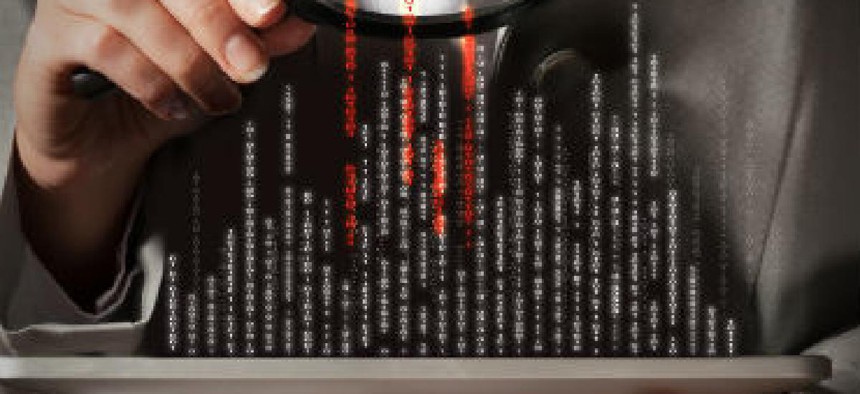White House goes public with bug disclosure policy

The Trump administration is pulling back the curtain a bit on the secretive process by which the government discloses (or retains) computer vulnerabilities.

The Trump administration is pulling back the curtain a bit on the secretive process by which the government discloses and retains computer vulnerabilities.
In the unclassified charter for the Vulnerabilities Equities Process (VEP) that was released Nov. 15, the government revealed which agencies have a seat at the table and what considerations must be taken into account when deciding whether to disclose a bug to software companies so it can be remediated or to retain it for use in secret espionage.
"We have given up some really exquisite capabilities in the name of making sure our systems are secure, and we've withheld some capabilities that at the time are justified but were needed for the national security process," White House Cybersecurity Coordinator Rob Joyce said in a Nov. 15 discussion at the Aspen Institute.
"There wasn't a lot of information about who was in the room participating and there wasn't a lot of transparency in just the whole way it was run, up to and including the information flow that was available to overseers," Joyce said. "As we entered into this administration, we felt that we needed to relook at it."
Representatives from cabinet-level departments including the Departments of Justice, State, Homeland Security, Defense, Commerce and Treasury are part of those deliberations, as are officials from agencies like the CIA, NSA and FBI. The overall process is overseen by Joyce and the White House, with the NSA serving as executive secretariat, charged with maintaining records of all known vulnerabilities across government, facilitating information flow and discussion between VEP stakeholders and drafting classified and unclassified annual statistical reports to Congress and the public
There is often tension and debate among different agencies about whether to disclose coding flaws to private companies so they can patch and fix the issue or to retain and exploit them for intelligence and national security purposes. The VEP is where those debates are hashed out among various stakeholders.
Joyce said the government discloses about 90 percent of the vulnerabilities that fall into its possession, and characterized media reports claiming the government is sitting on a vast horde of undisclosed vulnerabilities as "factually inaccurate."
The VEP charter mandates the creation of annual reports that will provide further insight into how many vulnerabilities come through the process and how many are disclosed and kept.
Joyce also said that when the government does decide to retain a vulnerability, it is "not a lifetime waiver." He said the body revisits the situation every six months to see if the vulnerability has been discovered by other third parties or if other conditions have changed.
"It is…highly, highly likely if we understood that an exploit was out of control and known and used elsewhere, it would trigger a release," he said.
Michelle Richardson, deputy director for the Center for Democracy and Technology, said the charter represented the first time the government acknowledged a preference for disclosure. She added that the stakeholders and questions included in the charter indicate a sophisticated, thoughtful effort to balance offensive and defensive cyber operations.
However, she said the VEP was just one piece of the puzzle in a larger debate over when and how the U.S. government should develop and use software exploits against other entities.
"There's a long chain of events that have to happen between the discovery of a vulnerability and the government actually hacking someone with it, and the VEP represents just a discrete step in that process," said Richardson.
"Whether they have two exploits or two thousand in that bucket, [the government] has to explain how they're going to keep them safe," she said. "People are going to keep banging on these guys about Eternal Blue or NotPetya, and in some ways it will be an albatross around their neck."
The U.S. government is the world's largest purchaser of malware and software vulnerabilities, and has suffered embarrassment over the past few years as a number of the tools it kept hidden were leaked, stolen and later repurposed by malicious hacking groups.
The new policy indicates that the commercial concerns of malware vendors come up in the disclosure process. The charter specifies that all government agencies "will appropriately safeguard information concerning vulnerabilities identified by other entities, to include private businesses, researchers, and foreign governments."
Andi Wilson, a policy analyst at New America, said the new vulnerabilities equities process public charter was welcome transparency that helped confirm previously held assumptions, with additional details such as the length of the review cycle and "a clear list of who was involved" with the equities review board.
However, Wilson cited one major concern: By foregoing Congress and relying exclusively on executive action, the process is on a perpetually unstable footing and subject to change or revision at any time. While the charter is helpful, she said, she hopes this represents the first step and doesn't diminish or distract from the need for VEP reform.
"This is policy not law," Wilson said, later adding that "any changes could be made by this administration or the next administration with the stroke of a pen."
An ideologically diverse group of senators introduced legislation to codify the process in May 2017. Many of the provisions of the Senate bill are included in the charter, and Joyce indicated that the White House hoped that legislation was no longer necessary.
"There's a lot of [other] things in Congress that we need legislation for, I believe that the charter covers down on the gaps and holes that they were talking about addressing," he said.
FCW staff writer Lauren C. Williams contributed to this article.





